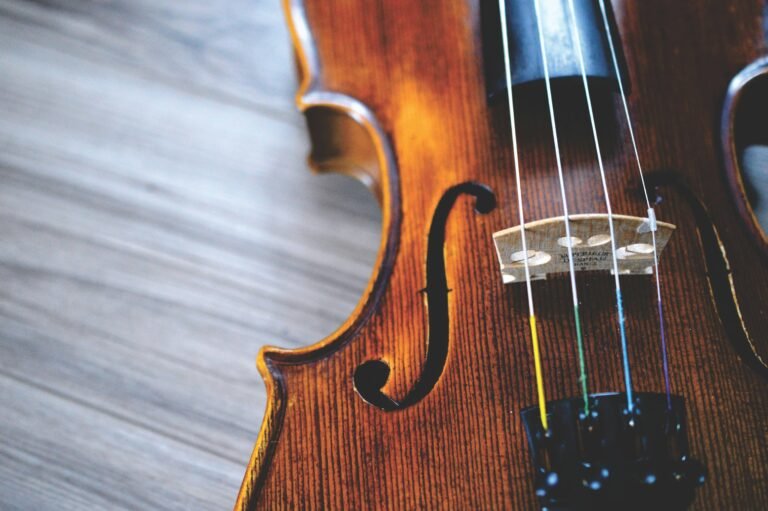Understanding Violin Sizes and Fit
How to choose the right violin for beginners! When it comes to learning the violin, selecting the correct size is crucial for beginners, particularly children. Violins are available in several sizes ranging from 1/16 to 4/4 (full size), catering to different ages and physical dimensions. Choosing the right size can significantly impact a student’s comfort and playability, enhancing their learning experience and preventing discomfort or strain.
The measurement process for determining the correct violin size involves the length of the player’s arm. This measurement is taken from the neck to the middle of the palm with the arm fully extended and slightly bent. Here’s a general guideline: a 1/16 size violin is suitable for a player with an arm length of about 14 inches, while a full-size 4/4 violin fits an arm length of around 23 inches or more. Nonetheless, these are approximations, and it is essential to verify the fit as each child is unique.
Another way to ensure an appropriate fit is to visit a music store and physically try out different violin sizes. A properly sized violin should allow the player to comfortably reach the end of the scroll with their fingers curling around it, without needing to stretch excessively. This hands-on approach is an excellent opportunity to feel different sizes and make a well-informed decision.
It is important to avoid common pitfalls such as choosing a violin that is too large, with the intention of the child growing into it. An oversized violin can cause strain and hinder proper technique development. Conversely, a violin that is too small can lead to unnatural playing positions and discomfort. Ensuring the correct size right from the start is key to a positive learning experience.
By prioritizing the accurate fit of a violin, beginners can enjoy a balanced and comfortable playing experience, laying a solid foundation for their musical journey. Proper sizing safeguards against unnecessary physical stress and promotes good posture and technique, which are essential for long-term success in playing the violin.
Materials and Craftsmanship: What to Look For
The selection of materials in violin construction is pivotal, primarily influencing the instrument’s sound quality and durability. Spruce and maple are the preferred woods for high-quality violins. The top plate, or soundboard, is typically made from well-aged spruce. This wood is prized for its tonal qualities and resonance, providing a clear and powerful sound essential for a superior violin. Conversely, maple, particularly for the back, sides, and neck, is chosen for its strength and ability to contribute to a robust, balanced sound.
The quality of the varnish applied to a violin also plays a significant role. A well-applied varnish not only protects the wood but also enhances the instrument’s tone by allowing it to vibrate freely. Poorly applied or low-quality varnish can dampen the sound and negatively affect the violin’s aesthetics. It’s advisable to look for a violin with a finely applied varnish, which can be identified by its consistent texture and glossy finish.
Instrument fittings, such as pegs, the fingerboard, tailpiece, and chinrest, are typically made from hardwoods like ebony or rosewood. These materials are chosen for their durability and ability to withstand constant use without deforming. Ensure that the pegs turn smoothly and hold their position well, as this indicates good craftsmanship. The fingerboard should be smooth and even, allowing for precise finger placement and ease of play.
The bow is an integral part of the violin package as well. A well-crafted bow made from high-quality materials like pernambuco wood or carbon fiber can significantly influence playability and sound production. Check the bow’s balance and weight to ensure it matches the player’s comfort and style.
Identifying the craftsmanship of a violin involves not just a visual inspection but an assessment of its acoustic characteristics. A well-made violin produces a clear, resonant sound that projects well. Pay attention to the instrument’s response; it should feel lively and responsive under the bow. Poor craftsmanship is often apparent through uneven seams, rough finishes, and inconsistencies in the wood.
The attention to detail in a violin’s construction ultimately affects its sound quality and longevity. By focusing on the types of materials used and the level of craftsmanship, beginners can make an informed decision, ensuring they invest in an instrument that will support their learning journey and provide years of musical enjoyment.
The Importance of a Good Bow and Rosin
When selecting a violin for beginners, it’s crucial to consider not just the violin itself, but also the bow and rosin. These components play a significant role in the ease of play and sound quality. The bow, for instance, can be made of wood or carbon fiber, each offering its own advantages. Wooden bows, traditionally preferred, provide a rich and warm tone, while carbon fiber bows are known for their durability and consistency in various atmospheric conditions.
The weight and balance of the bow are key factors as well. A well-balanced bow allows for smoother movement across the strings, which is especially beneficial for beginners learning to control their strokes. The bow’s weight should be appropriate for the player’s hand size and strength; a too-heavy bow can cause strain, while a too-light one may lack control. Quality horsehair is another critical aspect—it should grip the strings well to produce a clear sound. Testing different bows can help identify the one that feels most comfortable and suitable for the individual’s technique.
Rosin is equally important. This sticky substance, applied to the bow hair, increases friction between the bow and the violin strings, essential for sound production. Rosin comes in various types and grades, generally categorized as light or dark. Light rosin is less sticky, suitable for warmer climates and finer control, while dark rosin is stickier, ideal for cooler environments and providing a stronger grip.
Application of rosin should be done regularly, but not excessively—just enough to ensure smooth play without creating a buildup of residue on the strings or bow. Periodic maintenance of the bow, such as rehairing when the horsehair looks sparse or fails to grip the rosin effectively, is recommended for maintaining optimum performance.
Budgeting and Finding Reliable Sellers
When embarking on the journey of learning to play the violin, establishing a realistic budget is pivotal. Beginner violins can range widely in price, typically from $100 to $600. Setting a budget within this range can help ensure a balance between quality and affordability. When considering whether to purchase a new or used violin, it’s worth noting that used instruments can often offer better value for money. However, they should be thoroughly examined for any damage or repair needs.
Finding a reliable seller is crucial to acquiring a quality violin. Specialized music stores are often the best place to start, as they can provide expert guidance and often allow potential buyers to try out instruments. Additionally, local luthiers, who are skilled in making and repairing string instruments, can be a valuable resource for both new and used violins.
Online marketplaces also present a broad array of options, but caution is advised. Always check the seller’s reviews, ratings, and return policies before making an online purchase. Websites dedicated to music instruments often have better buyer protection and more reliable offerings compared to general online marketplaces. Rental programs are another viable option for beginners, allowing a trial period without a large upfront investment. Many rental agreements include options to purchase the violin later, with rental fees contributing toward the final price.
During the buying process, it is important to inquire about the seller’s return policies, warranties, and trial periods. These factors are imperative to ensure satisfaction with the purchase. Reputable sellers will be transparent about these terms and provide adequate support during the trial period. Furthermore, be wary of deals that seem too good to be true, as they often are. Avoid sellers who are unwilling to provide detailed information or allow you to test the instrument.
By setting a reasonable budget, exploring various purchasing options, and ensuring the reliability of the seller, you can confidently invest in a beginner violin that will meet your needs and foster a positive learning experience.



